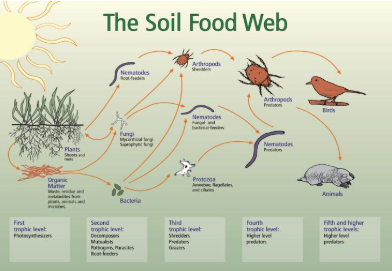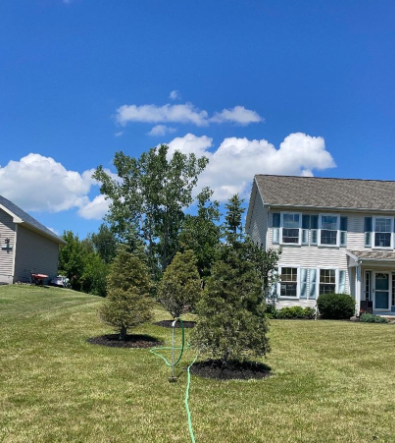What's Going On Underground? |
When you look at a tree, you see its sturdy trunk, established branches stretching toward the sky, and crown full of leaves. But what you don't see beneath the surface is just as important—if not more so—to the tree’s overall health. Soil and tree root systems form a dynamic partnership that is essential for ecosystem and tree health. Understanding this relationship can help homeowners make better choices for the trees in their yards. In Rochester, NY, soils are a mix of clay, sand, and loam, which can impact drainage and root development. Clay-heavy soils, common in parts of the region, can hold too much water and have poor pore space, while sandy soils may drain too quickly, making it harder for trees to access moisture. Proper soil management is key to supporting healthy root systems in these varied conditions.
Most tree roots, especially fine feeder roots, can be found in the top 18 inches of soil. What Do Tree Roots Do?Tree roots do more than just hold a tree in place. They absorb water and nutrients from the soil, store energy, and interact with microorganisms underground. Most of a tree’s roots grow within the top 12 to 18 inches of soil, spreading outward beyond the canopy. This wide-reaching root system is essential for stability and nutrient uptake. Soil and RootsSoil isn’t just dirt—it’s a complex ecosystem teeming with life. Tiny organisms, including bacteria and fungi, help break down organic matter. This makes nutrients available to tree roots. When soil is healthy, it creates an environment where trees can thrive naturally, without the need for excessive fertilizers. Trees, in turn, contribute to the soil cycle by shedding leaves, bark, and other organic material, which decompose and enrich the soil. Their roots also help stabilize soil structure, reduce erosion and promoting water retention. This ongoing exchange between trees and soil sustains a balanced ecosystem, supporting long-term growth and resilience.
The soil food web is an important part of ecosystem. The Power of Mycorrhizal FungiOne of the most critical underground partnerships is between tree roots and mycorrhizal fungi. These beneficial fungi form a symbiotic relationship with trees, attaching to roots and extending their reach. In return for sugars from the tree, mycorrhizae help absorb water and nutrients more efficiently. They even help protect against certain soil-borne diseases! Without these fungi, trees would struggle to access essential nutrients like phosphorus and nitrogen. Soil Health Amendments vs. FertilizingMany homeowners believe that if a tree looks weak, the best solution is to throw down some fertilizer. However, applying high-nitrogen fertilizers can actually do more harm than good. Quick bursts of growth from excessive fertilization can stress a tree, making it more vulnerable to pests and diseases. Instead of forcing fast growth, the goal should be sustainable health. Soil amendments—such as compost, mulch, and biochar—can improve soil structure, increase organic matter, and support beneficial microbial life. Instead of feeding the tree directly, these amendments enhance the soil, creating long-term benefits for tree growth and resilience.
These newly planted blue spruces are receiving a deep root soil amendment to help them thrive in compacted soil. Healthy Soil = Healthy TreesThe best way to support trees is by focusing on soil health. Avoid over-fertilizing, minimize soil compaction, and apply organic mulch to retain moisture and provide nutrients naturally. By nurturing the underground world, you’re ensuring that your trees grow strong, healthy, and sustainably for years to come. If you’re unsure about your soil health or tree care practices, reach out to our team! |



